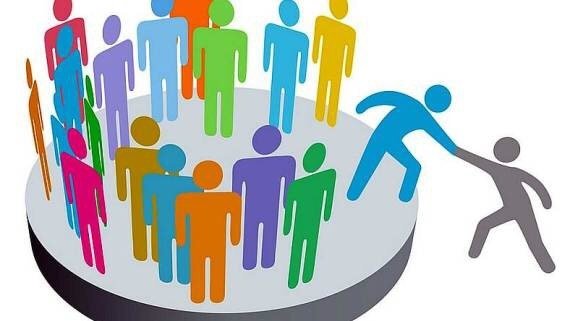Creativity: Psychological Perspectives
From inventions like the lightbulb or the atomic bomb, to paintings of eminent artist Hieronymus Bosch, creativity has been an area of interest to psychologists for sometime. Creativity has many applications, both for benevolence such as the act of creating in expressive therapy, and malevolence such as creating the most effective weapon or designing the most damning torture. Ultimately, it has become clear to psychologists that understanding the inner workings of creativity may reveal to us the next eminent creator of our time, be they a scientist or an author of romance novels.
Definition
Creativity has evaded certain definition for many reasons. Is it a personality trait or is it a process? Although it seems that most definitions agree that novelty is important to the definition of creativity, many disagree with the idea that what has been created must be useful. In what ways are a painting useful, except to its creator? Is the invention of a story creative? What if the creative act borrows quite heavily from existing products? Is there any creativity in committing plagiarism? Although operational definitions may be difficult to agree upon, for our purposes, the psychological definition of creativity assumes that a product is being made, and that the product is both novel and useful within the context of a given, specific environment. The degree of usefulness is the subject of a different discussion. Therefore, the act of creative writing, the act of abstract painting, even the act of the research in the theory of natural selection, are all creative.
Models of Creativity
Many models of creativity exist as there are many perspectives on creativity, ranging from cognitive psychology to positive psychology. Here, two models of creativity as proposed by positive psychologists will be examined.
Csikszentmihalyi's Systems Model
Csikszentmihalyi has proposed a tripartite, systemic model of the process of creativity. These three, distinct systems interact to produce a novel product. He offers different factors that may influence these different systems, as well.
The three systems are:
The person, along with their talents, personality traits, and motivations in regards to the domain in which they are interested in creating and operating in.
The domain, which consists of a symbol-system (language, arithmetical symbols), rules of that system, techniques and practices, and guiding paradigms.
The field which consists of people working within the same domain of creativity. These people are thought to be governed by the same domain-specific rules in the above point.
Distinct, these systems interact with each other and are part of larger systems in which they operate:The domain is considered to be a larger part of a culture, or a collective of domains that make up the life of any given society.
The individual is part of a system of their personal background with both conscious and unconscious workings.
The field is considered to be part of the society of that field, e.g., painters and artists, or English novelists and English speakers.
Csikszentmihalyi considered many factors that may facilitate, or in turn, stifle creativity.
Cultures
A culture's mode of operation and existence can contribute to creativity. Accurate storage of and wide availability of information can be conducive to creativity, whereas information that is inaccurate, or even orally transmitted to a narrow selection of people, may not encourage creativity. The more differentiated the domains of information and the more loosely coupled they are with each other, the greater the creative output, meaning that if a culture focused solely on mathematics and its different disciplines, it may not encourage creativity, especially in other domains. Further, upon generation of new ideas, they are less likely to be accepted by that culture, even if the idea that was generated pertained to the field of mathematics. Lastly, cultures that are exposed to other cultures and their ideas will be more likely to foster creativity, change, and innovation.
Domains
Domains in which clear and accurate symbol systems are used ti record information are more likely to facilitate creativity as they will find it easier to incorporate innovation into their existing knowledge base. Tightly organized and integrated fields make it more difficult to accept new ideas, whereas loose organization and integration may simply fail to recognize innovation when they see it. Centrality of the domain to the culture at large, such as religion and politics to a theocratic nation, may find it difficult to incorporate innovation. A loose yet existent and clear connection from the field to culture facilitates innovation and allows it to flourish.
Society
Societies can certainly influence creativity. A society in which there is a surplus of physical and mental energy promotes creativity, as opposed to those where resources are expended for the sake of survival. Further, the value of progressiveness and mercantilism are likely to foster creativity where maintenance of caste, hierarchical structure, and the status quo stifle it. Interestingly, external threats and internal strife foster creativity.
Fields
Fields in which practitioners can obtain economic status or resources for their products are more likely to promote creativity. Fields in which judgment is placed heavily on religious, political, or economic considerations inhibit creative output. Fields which are isolated from others do not allow creativity to flourish. Overly lax and stringent criteria for admittance of ideas also stifle creativity.
Family Life
Families that have a surplus of energy and resources who in turn promote curiosity and creativity among their children will promote creative output as opposed to those who are focused solely on survival. Additionally, creativity is more likely to occur when a child has been introduced to a domain with mentorship. They are more likely to be creative when coming from a marginalized background and they want to break through the binds of their circumstance. When perseverance is encouraged in the face of trials, adversity, and trauma, creativity is facilitated.
Personal Characteristics
Talent or aptitude in a given domain can facilitate creativity, especially when paired with intrinsic motivation to work hard and perform well in that domain. Well-developed divergent thinking skills contribute to creativity. An openness to experience is considered a beneficial personality trait in addition to cognitive flexibility. Unconventional dispositions also contribute to creativity. Dissatisfaction and internalization of the conventions in a given field are also beneficial, so that one can decide which rules are good for them, and which are not, in order to vary upon them and create new ideas.
Sternberg and Lubart's Investment Theory

Sternberg and Lubart are describe creativity using a metaphor you may be familiar with: buying low and selling high. That is, creative processes usually take -place when the creator has become interested in something that has little relative value to the community. The idea is then developed and grown so that it becomes interesting, and then the creator "sells" the product to the community. In order for this to take place, there must be six general things at play:
- Intellectual ability to see and approach problems in novel ways, as well as parse which problems are worthwhile pursuits and which are not.
- Knowledge in field so that the creator can move forward, but not so much that they are disabled by their own conventions.
- The ability to think unconventionally about the problem on both systemic, global and local levels.
- Requires characteristics of (reasonable) risk taking, persistence, self-efficacy, and tolerance for the ambiguous.
- Intrinsic motivation regarding their field.
- Supportive environment that rewards innovation in that field.
These two theories may borrow from each other to create a more unified theory, and some aspects are not mutually exclusive.
Creative Processes
There are a number of different processes and psychological phenomena associated with the creative process. Namely, there are those suggested by the school of cognitive psychology, emotions, and neurobiology. Environments can also have an effect on creation.
Cognitive Psychology
Cognitive psychology refers to the process of divergent thinking often when discussing the role of cognition in creativity. Convergent thinking is the process of finding a single specific solution to a problem where not a lot of creativity is involved, where divergent thinking would be searching the cognitive space for any number of solutions that may fit the paradigm, often implicating creativity. In addition to divergent thinking, gestalt psychologists have proposed a stage system for creativity. These stages are preparation, incubation, insight, and verification.
- Preparation - the process of envisioning or quite literally preparing for creativity. This is as simple as imagining the product and setting intentions for how one will arrive at the end product.
- Incubation - this is time spent processing the creativity process.
- Insight - this is the classic aha! moment that is often arrived at by reformulation of a problem in a novel way.
- Verification - this is the process of checking the product for errors and determining if the end product is indeed what the creator envisioned.
Emotions

Neurobiology
Evidence has suggested that the right hemisphere dominates and is subservient in creating innovative solutions to divergent thinking problems for right-handed people, which may be where the popular myth of being right-brained comes from. Additionally, this does not get at the focus of other forms of creativity but is fairly specific to creative problem solving, as opposed to generative creativity and expressiveness. Creative people show lower levels of cortical activation during insight and higher levels of activation when resting than non-creative individuals. Contrary to the popular myth mentioned above, it has been found that white matter tracts that connect several bilateral areas are implicated in creativity and divergent thinking, suggesting that much of both hemispheres of the brain are used. These areas include the bilateral prefrontal cortices, corpus callosum, bilateral basal ganglia, bilateral temporo-parietal junction, and right inferiror parietal lobe. Findings also suggest correlations between divergent thinking scores and gray matter volume in the dopaminergic systems.
The Role of Environment on Creativity
Families
In alignment with the theories above, families who are supportive of their creative individuals tend to see the creative individual perform better with greater creative output. That is not to paint a glossy picture, however, as enduring childhood trauma such as death of a parent, illness, natural disasters, economic disadvantage, etc., also predict higher creative output. It could be that the combination of these variables allow a creative person's imagination to flourish.
Work Environments
There are a number of variables associated with creative output in a work environment when it comes to teamwork:
- Vision and commitment to team goals
- Support of innovation within the team
- Good communication network with those outside the team
- Shared concern for excellent task performance
- Good within-team communication
- Cohesion and commitment to the team
- Interdependence of team members' work goals
- Large team size
- Diversity of team members' skills and professions
- Trust and parcipitative decision making
A Note on Culture
Culture typically operates on an individualist-collectivist continuum and it has been suggested that individualist cultures promote creativity and collectivist cultures promote conformity.
Training in Creativity
Programs that seek to increase creativity focus on the cognitive aspects of creativity. Although they focus primarily on problem solving, one will be advanced, as well as many creative practices that are considered by other artists in different forms of creativity.
Problem Solving
There are six steps in a popular program to increase creative problem solving:
- Mess finding - problem identification
- Data finding - The research and facts related to situation are gathered
- Problem finding - where various problems associated with the mess are identified and a useful framing of underlying problem is made
- Idea finding - a brainstorm approach, if you would
- Solution finding - The best solution to the main problem is identified
- Acceptance - an effort is made to gain acceptance for the solution.
Creativity in the Arts
It is difficult to examine what is most helpful when looking for ways to be more creative when it comes to art. However, the above model can be used. Reframing or changing perspective on a given item may allow for someone to imagine it and approach it differently, and thus, describe or render it in an interesting way. Listing conventions that work for you and do not work for you and varying upon these conventions may be another helpful tip for creation. Lastly, it is important to recognize creative greats that came before you, and nothing can beat the inspiration that comes from inundating yourself in the creative works of a genius. Just think, you can be a genius, as well.
Conclusion
This concludes our work on creativity. In effect, many ideas about creativity have been posited, but keep in mind that it is a budding field, just as psychology is growing, and that there is more to come. Many of these works did not anticipate globalization that has occurred on today's level, so it is exciting to see what kind of creativity will come from all corners of the world.





You got a 1.99% upvote from @postpromoter courtesy of @aceaeterna!
Want to promote your posts too? Check out the Steem Bot Tracker websitevote for @yabapmatt for witness! for more info. If you would like to support the development of @postpromoter and the bot tracker please
Good article!